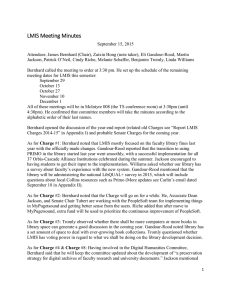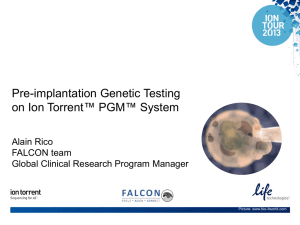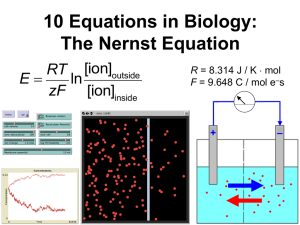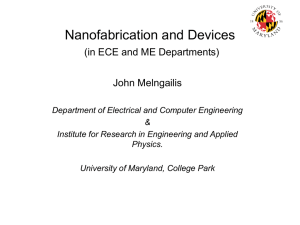Liquid Metal Ion Source
advertisement
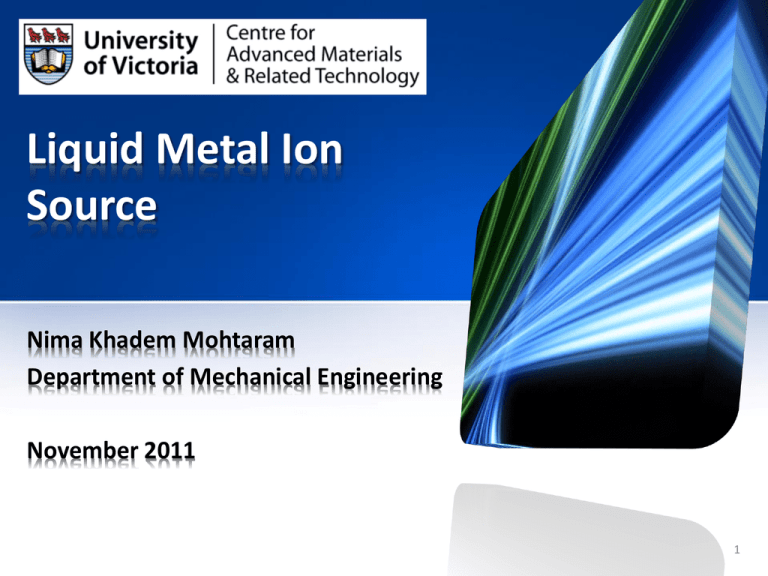
Liquid Metal Ion Source Nima Khadem Mohtaram Department of Mechanical Engineering November 2011 1 What is LMIS ? In a Liquid metal ion source (LMIS), a metal (typically gallium) is heated to the liquid state and provided at the end of a capillary or a needle. Then a Taylor cone is formed under the application of a strong electric field. As the cone's tip get sharper, the electric field becomes stronger, until ions are produced by field evaporation. These ion sources are particularly used in ion implantation or in focused ion beam instruments. 2 What is LMIS? • An LMIS is a field ion emission source. Such sources generate high–brightness positive ion beams from neutral atoms or molecules, by field–induced ion formation at the tip of a needlelike emitter. 3 Operating needle • The normal LMIS can use Pure Metal Alloy liquid alloy ion source (LAIS) 4 History of LMIS Early observations: • Gilbert (1600): fluid under high tension forms a cone • Zeleny (1914): Observed and filmed cones and jets • Taylor (1964): exactly conical solution to equations of Electro Hydro Dynamics (EHD) 5 Early work Zeleny 1914: he took excellent ultra fast pictures of TC moving the photo plaque with a rubber band! Inventor of Zeleny Electroscope (University of Minesota) 6 Interaction Electric field - Liquid surface • Electrostatic energy and surface tension energy 7 Why LMIS? 8 Comparison of Various Ion Sources 9 Requirements For The Ideal Liquid Metal Ion Source • A Low Melting Temperature • Low Volatility at the Melting Temperature • High Relative Bulk Concentration of Ion Species of Interest • Low Surface Free Energy and Good Wetting • Low Solubility of Alloy in Substrate • Low Solubility of Substrate in Alloy • Favorable Mechanical, Electrical , and Vacuum Properties 10 Ion sources for FIB 11 Ga source: LMIS • very high special coherence, i.e. focusable beam! 12 Ga source: LMIS Coil for heating, also serves as Ga reservoir Ga forms a Taylor Gillbert cone 13 Operation Principle of LMIS 14 Operation Principle of LMIS By applying an electric potential between the needle and a downstream metallic extractor, a structure known as a Taylor cone is formed at the tip of the needle. Once we exceed a threshold voltage, ions and droplets are extracted from the cone, and pass through a hole in the extractor. 15 Advantages • Liquid Metal Ion Sources (LMIS) • LMIS is the answer to high resolution, focused ion beam (FIB) imaging, nanofabrication, depth profiling, SIMS*, ion doping and ion beam lithography. FEI uses LMIS in a variety of configurations: FIB columns, FIB systems, and DualBeam systems. • Advantages • High angular intensity • Stable emission process 16 Thanks for your kind attention STEHM (HF 33XX) coming! 17



